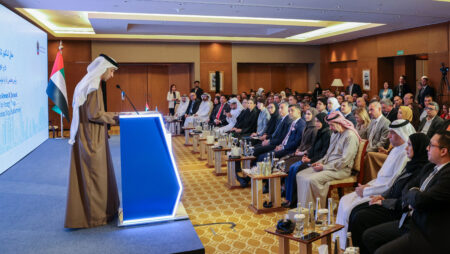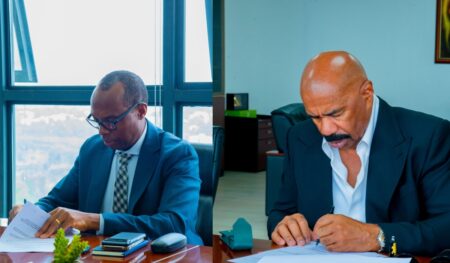- Africa homes about 30 per cent of the world’s mineral reserves, including 40 per cent of the world’s gold, 60 per cent of its cobalt, and 80 per cent of the platinum group metals.
- Mineral resources are a critical source of revenue for Africa.
- The interest in renewable energies in the mining industry arises from the escalating energy demand within the sector.
Mining in Africa faces ongoing challenges due to environmental degradation and social conflicts with local communities. Deforestation, land degradation, and air pollution are persistent issues linked to mining activities. However, effective prevention and mitigation measures can alleviate these impacts.
Africa’s mineral wealth is staggering. The continent homes about 30 per cent of the world’s mineral reserves, including 40 per cent of the world’s gold, 60 per cent of its cobalt, and 80 per cent of the platinum group metals. The Democratic Republic of Congo (DRC), for instance, with over 70 per cent of the world’s cobalt reserves, has already witnessed how strategic mineral extraction can significantly elevate its gross domestic product (GDP). According to the World Bank’s “Africa’s Pulse” report from 2022, these critical minerals are instrumental in how countries like the DRC transition toward more sustainable economic models.
The African Continental Free Trade Area (AfCFTA) dramatically elevates this potential, weaving together a vast market of 1.3 billion individuals. It’s designed to turbocharge cross-border mining investments, dismantle trade barriers, and breathe new life into intra-continental trade. Leveraged effectively, this ambitious initiative could significantly expand Africa’s mining output, harnessing the continent’s collective economic power and collaborative spirit.
Read Also: What the AfCFTA Means for the Mining sector
Mining in Africa
Mineral resources are a critical source of revenue for Africa. In 2019, minerals and fossil fuels accounted for over a third of exports from at least 60 per cent of African countries. The continent produces around 80 per cent of the world’s platinum, two-thirds of its cobalt, half of its manganese, and a substantial amount of chromium, leaving it in a solid position to benefit from growing demand for these minerals. Moreover, Africa is believed to have some of the world’s largest untapped mineral reserves.
Unfortunately, due to lack of systematic geological mapping and exploration means the full scope of the continent’s resources remains unknown. Mining companies and African governments must embrace Fourth Industrial Revolution (4IR) technologies to unlock mineral-rich African countries’ full potential. Artificial intelligence (AI), automation, and big data can help mining firms limit environmental damage, improve working conditions, reduce operating costs, and boost productivity.
Adopting efficient renewable-energy systems is already helping the mining sector reduce its environmental impact. Autonomous 4IR technologies complement the clean-energy transition by cutting fuel consumption in loading, hauling, crushing, and drilling processes. According to one estimate, driverless technology could lead to a 10-15 per cent decrease in fuel use on mine sites.
Better use of data and analytics can also improve mine performance. Mining companies generate enormous amounts of data throughout their operations, but only a few use it in a way that provides real value. This represents a significant missed opportunity because advanced analytics can optimise mine planning, increase yields, and reduce equipment downtime.
4IR technologies will define the future of mining. But while they represent tremendous opportunities for boosting productivity, improving safety, and mitigating the environmental impact of mining, they also raise legitimate concerns. Many new technology-enabled jobs require skilled workers that the labour market cannot supply, implying limited employment opportunities without educational and training programs to reskill workers.
Read Also: Artificial Intelligence and Automation: Employee Concerns
Scaling the mining industry in Africa

Foreign direct investment can help provide the capital and expertise to develop mineral processing industries, but the absence of a substantial regional market makes local processing investments less enticing. Policymakers need to remedy this.
Countries can develop a supportive business environment by strengthening domestic financial markets and improving access to finance. New fintech innovations offer exciting potential to help firms that serve the mining sector but need help securing traditional financing. Managing new resource windfalls responsibly requires accountable and transparent institutions allied with appropriate tax regimes and sound public financial management.
Enhancing sustainability in the African mining sector
Africa’s potential to achieve the Sustainable Development Goals (SDGs) by 2030 is bolstered by its abundant mineral wealth, including tansanite, gold, diamonds, uranium, platinum, and coal. However, many countries grapple with the resource curse, civil unrest, and extreme poverty.
In response to global pressures for sustainability, mining companies in Africa are increasingly adopting low-carbon technologies and sustainable practices. Advanced technologies like machine learning, artificial intelligence, cloud computing, and robotics are revolutionising process automation in the mining sector, enabling real-time monitoring and comprehensive simulations during the design phase.
Furthermore, innovative mining techniques such as in-situ leaching are being embraced to minimise environmental impact. Integrating alternative energy sources like solar, wind, and hydroelectric power is poised to reduce mines’ carbon footprint and enhance sustainability.
Adapting renewable energies in the mining industry

Solar-powered mining operations benefit from reduced fuel costs, lower maintenance expenses, and increased energy independence while generating employment in local communities. Examples like B2Gold’s Fekola Mine in Mali, Essakane Gold Mine in Burkina Faso, Gold Fields’ South Deep Gold Mine in South Africa, and B2Gold Otjikoto Mine in Namibia highlight the success of solar integration, leading to significant cost savings and environmental benefits.
To achieve sustainability in the African mining sector, a comprehensive approach encompassing environmental, social, and economic dimensions is crucial. This approach should emphasise renewable energy adoption, responsible mining practices, and technological innovation. A cohesive policy framework, especially regarding solar energy adoption, is essential to reinforce sustainability efforts across the mining sector.
Conclusion
The pivotal industry trend shaping Africa’s mining sector trajectory lies in the capacity of industry players to adopt sustainable mining practices, prioritising not only economic gains but also addressing social and environmental concerns. This transition necessitates establishing and implementing robust policy frameworks, including clear and adaptive regulatory frameworks, incentive programs, grid integration and infrastructure enhancement, capacity building and awareness initiatives, and funding for research and development programs.
Industry leaders and policymakers must work together to capitalise on digitalisation’s opportunities. Many mining companies are reluctant to invest in new operations that require a stable regulatory framework because they do not trust African governments’ capacity to enforce compliance. As a first step, governments must change that perception. After all, the economic benefits of digitalisation extend to governments and local communities. As mines become more productive and profitable, national governments will have more revenue to invest in infrastructure, like roads, schools, and health clinics.
Mines that embrace digital transformation will increase their production, run more efficiently and effectively, and be more environmentally sustainable. They will set new standards for workers’ health and safety and could contribute to reskilling through educational and training programs. In short, they will disrupt Africa’s mining sector, but the advantages of digitalisation, if harnessed correctly, will far outweigh the risks.
Read Also: Investing in Africa: Why here and now











